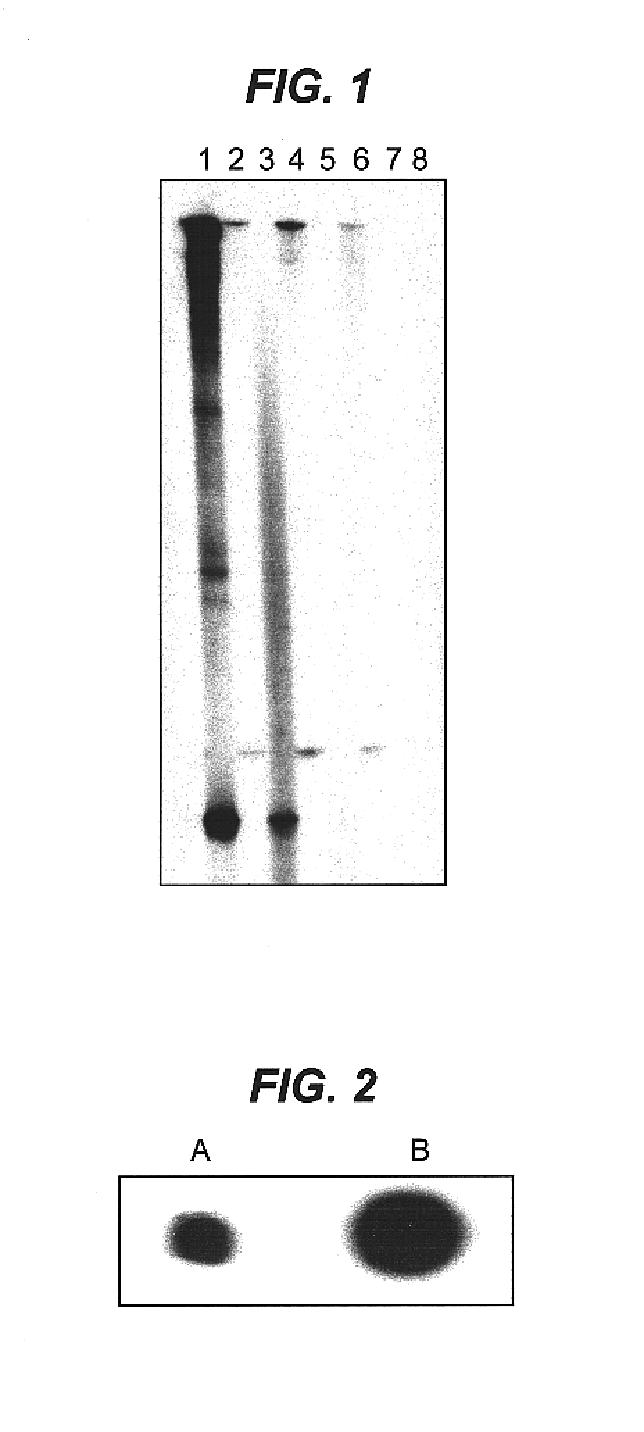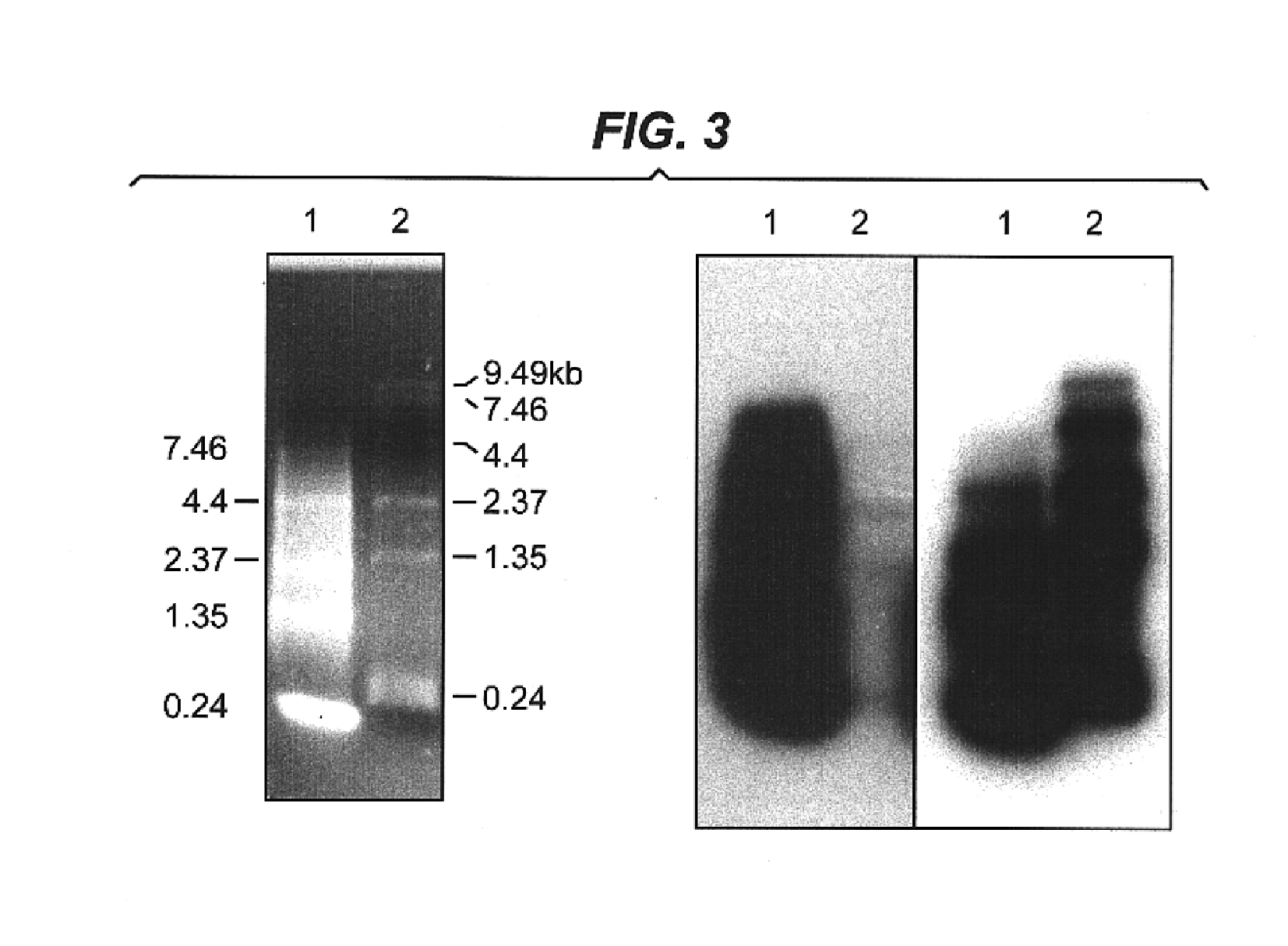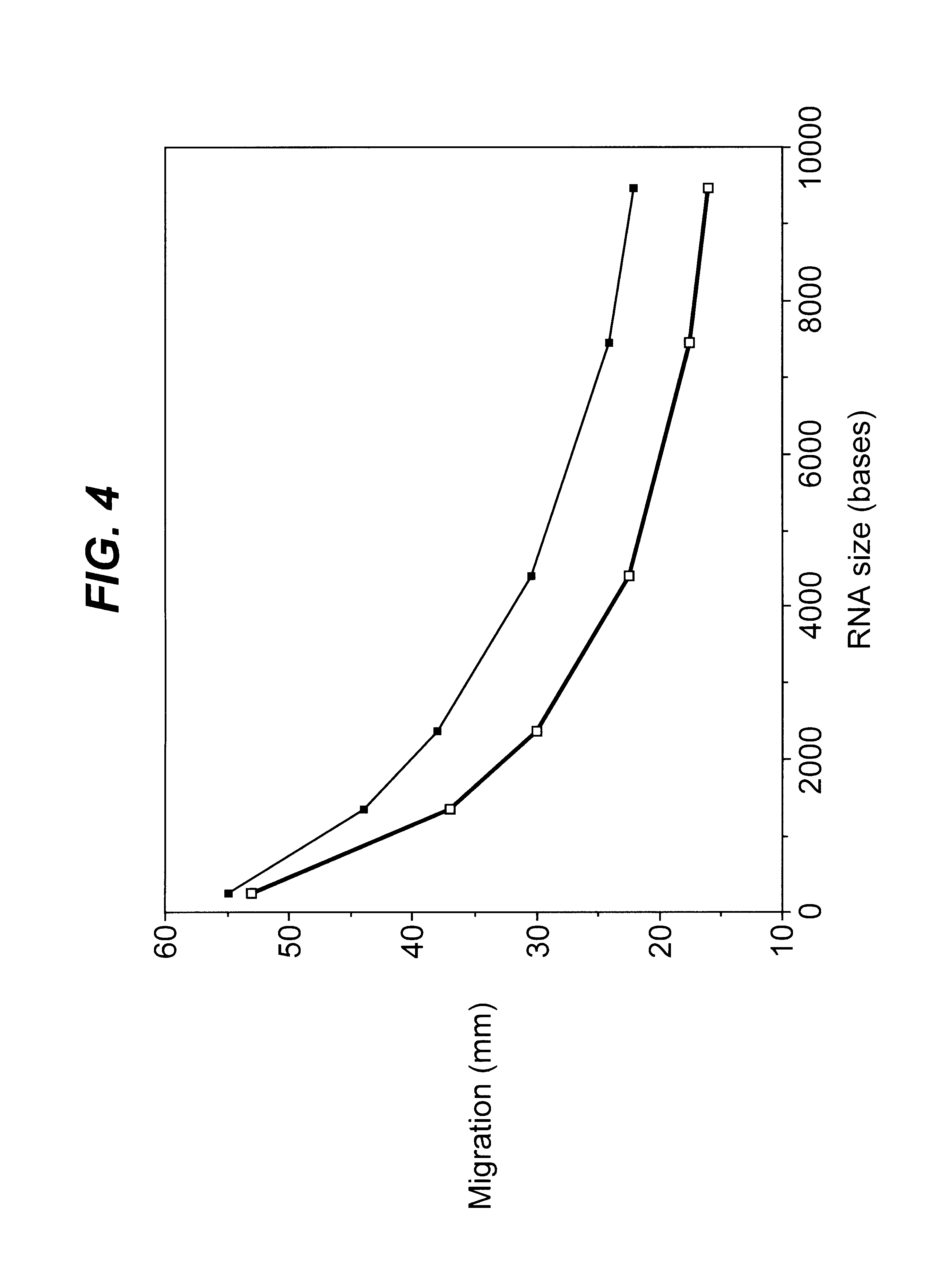Modified polynucleotides and uses thereof
a technology of polynucleotides and polynucleotides, applied in the field of polynucleotides, can solve the problems of inability to reliably or accurately carry out measurements, and affecting the success of rna manipulation for all except the most experienced
- Summary
- Abstract
- Description
- Claims
- Application Information
AI Technical Summary
Benefits of technology
Problems solved by technology
Method used
Image
Examples
example 2
Acylation of Purified mRNA
A sample of tissue such as 1 g of mouse skeletal muscle is immediately snap-frozen in liquid nitrogen and then ground under liquid nitrogen with a mortar and pestle then transferred to a 10 ml centrifuge tube. Further tissue and cellular disruption is then made by standard means such as homogenisation using a Waring blender (Waring Commercial, Gateshead, England), in the presence of guanidine isothiocyanate and phenol commercially available as TRIzol reagent from Gibco BRL. Following a 5 minute incubation at room temperature, 0.2 ml of chloroform was added per 1 ml of TRIzol reagent and shaken for 15 seconds. Following centrifugation at 12,000×g for 15 minutes at 4° C. the upper aqueous phase was removed and mixed with 0.5 ml of isopropanol per 1 ml of TRIzol reagent in a fresh tube. The samples were incubated for 10 minutes at room temperature and centrifuged again at 12,000×g for 10 minutes at 4° C. The pellet containing the total RNA fraction was washed ...
example 3
Halide Ion-catalysed Acetylation Reaction
The specificity and amount of mRNA acetylation can be improved by the addition of halide ions such as fluoride ions. Between 100 ng to 1000 ng of purified mRNA was mixed with a solution containing 30 nmol tetrabutylammonium fluoride (TBAF) or tetrabutylammonium iodide (TBAI), 10 μmol of acetic anhydride and tetrahydrofuran (THF) or triethylamine (TEA) serving as the solvent to bring the final volume to 20 μl. The reaction is allowed to proceed for 2 to 30 minutes at room temperature. Alternatively, pivalic anhydride or benzoic anhydride may be substituted for the acetic anhydride as the acyl donor (Beaucage and Ogilvie, (1977) Tetrahedron Lett., 1691). Alternatively 10 μl of one of the acylating reagents, acetic-formic, propanoic, butyric, pentanoic, hexanoic, heptanoic, octanoic or benzoic anhydrides was added instead of acetic anhydride. All other reaction and purification methods were identical. The unreacted components were removed either...
example 4
Aminopyridine-catalysed Acylation Reaction
Described is the catalytic acylation of alcohols with an acid anhydride involving triethylamine and the hypernucleophillic acylation catalyst aminopyridine such as 4-pyrrolidinopyridine. To a solution of 1 μg of RNA in 1 μl of water was added 60 μg of 4-pyrrolidinopyridine in 20 μl triethylamine(TEA) and then 10 μmol of an acid anhydride such as acetic-formic, acetic, propanoic, butyric, pentanoic, hexanoic, heptanoic, octanoic or benzoic anhydrides was added. The reaction was mixed and allowed to proceed at room temperature until acetylation was complete (2 minutes to 30 min), (Hofle and Steglich, (1972) Synthesis 619; Steglich and Hofle, (1969) Tetrahedron Lett. 4727; Hassner, et al., (1978) Tetrahedron 34:2069). Excess components of the reaction were removed either by ethanol precipitation (Sambrook et al., (1989) Molecular Cloning: A Laboratory Manual, CSH) or Microcon-50 spin-column purification (Amicon, USA) as described.
PUM
| Property | Measurement | Unit |
|---|---|---|
| molecular weight | aaaaa | aaaaa |
| temperature | aaaaa | aaaaa |
| v/v | aaaaa | aaaaa |
Abstract
Description
Claims
Application Information
 Login to View More
Login to View More - R&D
- Intellectual Property
- Life Sciences
- Materials
- Tech Scout
- Unparalleled Data Quality
- Higher Quality Content
- 60% Fewer Hallucinations
Browse by: Latest US Patents, China's latest patents, Technical Efficacy Thesaurus, Application Domain, Technology Topic, Popular Technical Reports.
© 2025 PatSnap. All rights reserved.Legal|Privacy policy|Modern Slavery Act Transparency Statement|Sitemap|About US| Contact US: help@patsnap.com



